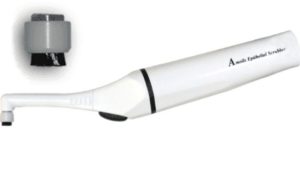When To Choose Wavefront Epi-LASIK (Modern PRK) Over LASIK
Both Epi-LASIK and LASIK have proven to be equally-effective methods for laser vision correction. While the initial recovery is usually slower with Epi-LASIK compared to LASIK, the final vision result is the same with either method. In my ophthalmology practice, I currently perform about 70% LASIK and 30% Epi-LASIK. Given the fact that LASIK has a quicker recovery and less discomfort, why would anyone choose to have Epi-LASIK instead of LASIK? The reason is that in some clinical scenarios, Epi-LASIK may have a safety advantage LASIK.
Though LASIK offers some distinct advantages over Epi-LASIK, including faster visual recovery, faster healing, and less discomfort, Epi-LASIK may be the treatment of choice for certain clinical situations, such as:
For patients with certain corneal measurements, there may be an elevated risk of a LASIK flap problem. For these patients, it is safer to select Epi-LASIK, which avoids the flap problem all together. What’s the downside? With Epi-LASIK, there is a slower initial recovery and more initial discomfort. However, recent improvements in our “Soft Brush” Epi-LASIK techniques have greatly reduced the initial discomfort that was associated with the original PRK procedure. We have fine-tuned our post-operative Epi-LASIK regimen to make the initial healing phase as comfortable and quick as possible for our patients. When I recommend Epi-LASIK, it is because long-term safety is more important than achieving an instant recovery. Ultimately, this is a clinical decision that requires experience and judgment.
In “Soft Brush” Epi-LASIK, rather than creating a LASIK flap, the surface epithelial skin cells are brushed away before the excimer laser reshapes the exposed surface of the cornea. With modern techniques, the epithelium can be removed with an automated polishing brush, dilute alcohol solution or a motorized instrument. I prefer to use an automated soft brush device, called an Amoils “Soft Brush” Polisher.

In some cases I may use dilute alcohol for Epi-LASIK in eyes that have had previous surgery, such as radial keratotomy. In Epi-LASIK, the actual procedure is completely painless, but patients usually report moderate discomfort during the first 3-4 days, as the corneal epithelial skin cells heal over the laser-treatment area. A soft bandage contact lens is placed for comfort during this time. Good functional visual recovery takes about a week or two, but like LASIK, it can take several weeks to improve to optimal levels. I tell my Epi-LASIK patients to expect eye soreness for 3-4 days and somewhat blurry vision for the first 6-7 days. I use Mitomycin-C medicine immediately after the laser treatment to help the cornea heal better.
606 Saratoga Ave,
San Jose, CA 95129
5790 Stoneridge Mall Rd, Pleasanton, CA 94588